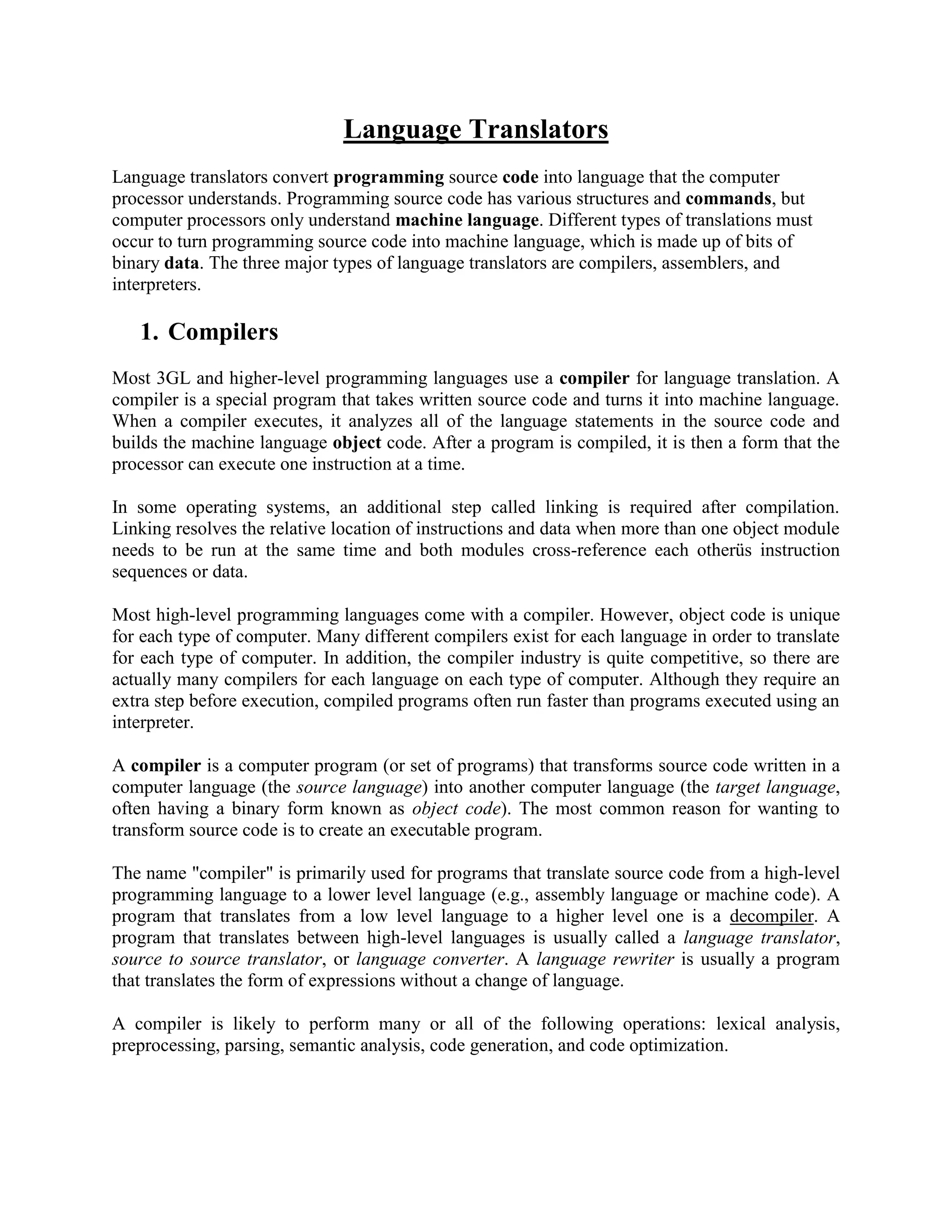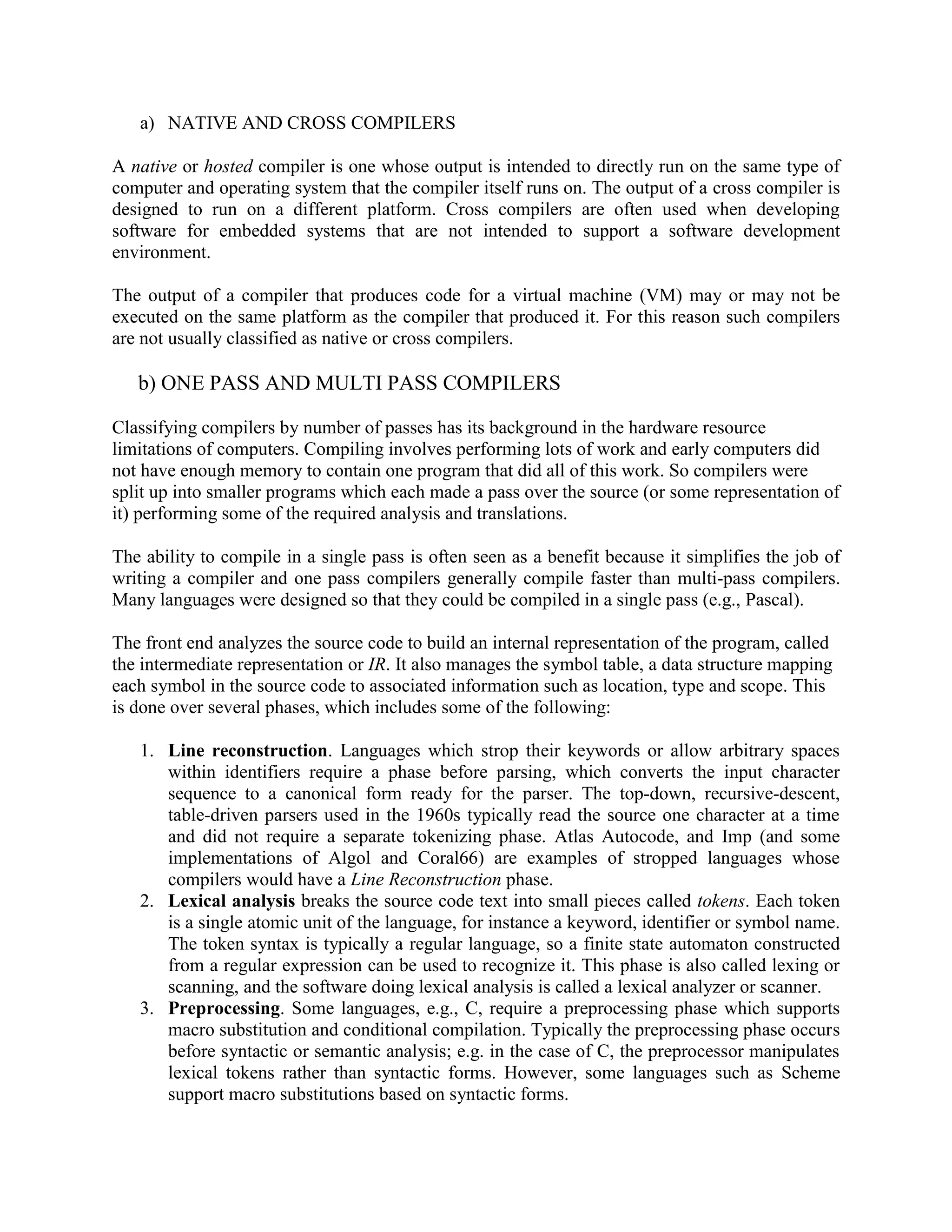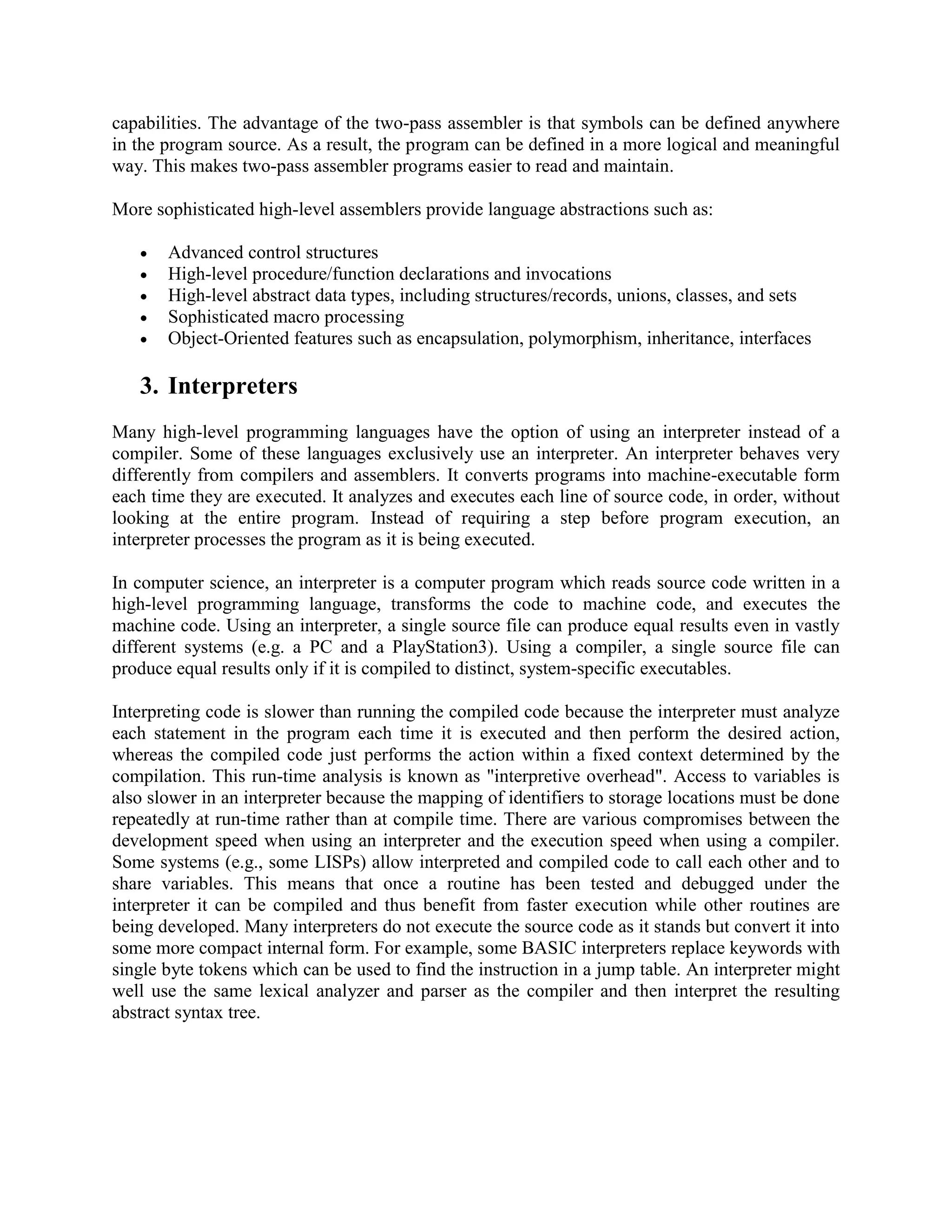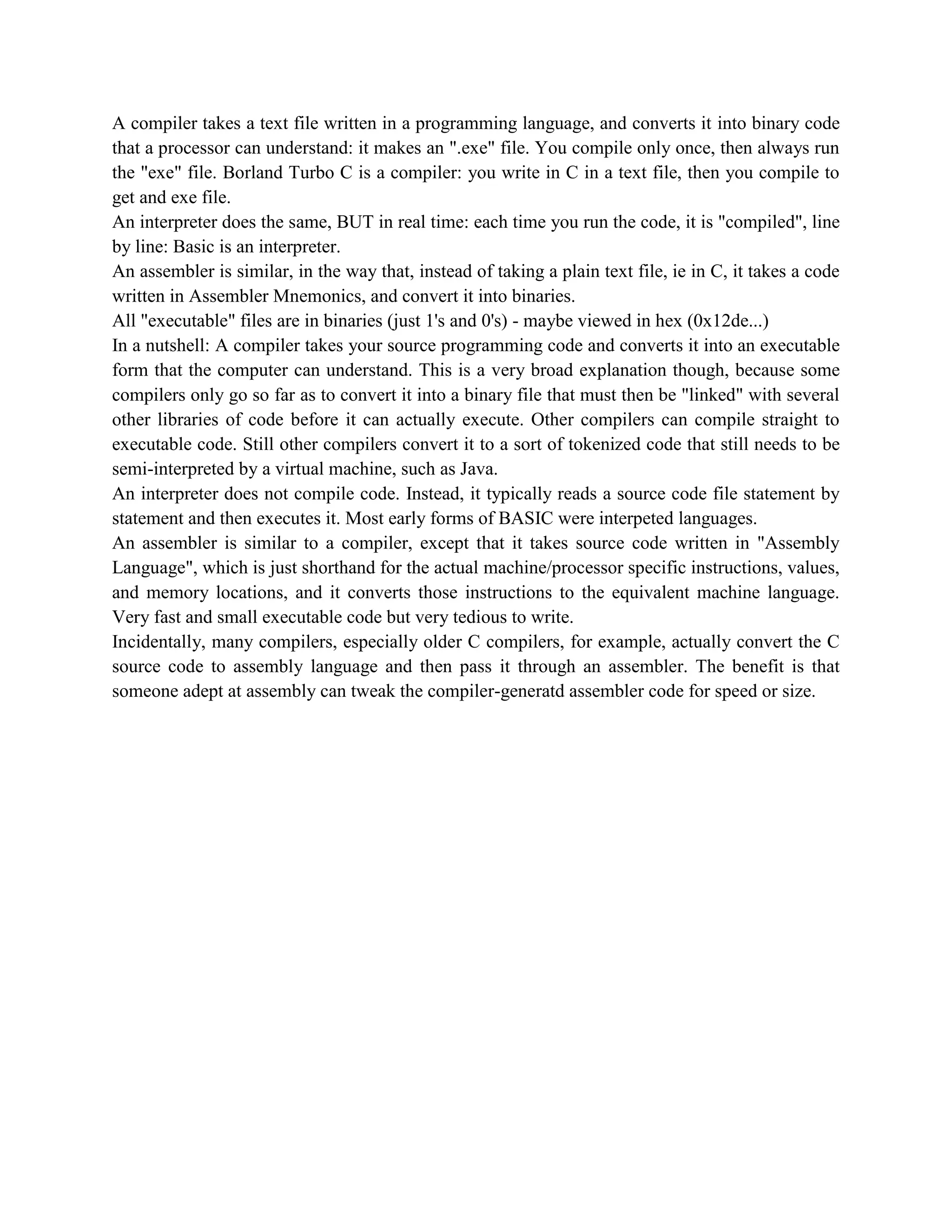Language translators convert programming source code into machine language understood by computer processors. The three major types are compilers, assemblers, and interpreters. Compilers translate high-level languages into machine code in one or more passes, assemblers assemble assembly language into machine code, and interpreters analyze and execute each line of source code as the program runs without pre-translation.


![4. Syntax analysis involves parsing the token sequence to identify the syntactic structure of
the program. This phase typically builds a parse tree, which replaces the linear sequence
of tokens with a tree structure built according to the rules of a formal grammar which
define the language's syntax. The parse tree is often analyzed, augmented, and
transformed by later phases in the compiler.
5. Semantic analysis is the phase in which the compiler adds semantic information to the
parse tree and builds the symbol table. This phase performs semantic checks such as type
checking (checking for type errors), or object binding (associating variable and function
references with their definitions), or definite assignment (requiring all local variables to
be initialized before use), rejecting incorrect programs or issuing warnings. Semantic
analysis usually requires a complete parse tree, meaning that this phase logically follows
the parsing phase, and logically precedes the code generation phase, though it is often
possible to fold multiple phases into one pass over the code in a compiler
implementation.
2. Assembler
An assembler translates assembly language into machine language. Assembly language is one
step removed from machine language. It uses computer-specific commands and structure similar
to machine language, but assembly language uses names instead of numbers.
An assembler is similar to a compiler, but it is specific to translating programs written in
assembly language into machine language. To do this, the assembler takes basic computer
instructions from assembly language and converts them into a pattern of bits for the computer
processor to use to perform its operations.
Typically a modern assembler creates object code by translating assembly instruction
mnemonics into opcodes, and by resolving symbolic names for memory locations and other
entities.[1] The use of symbolic references is a key feature of assemblers, saving tedious
calculations and manual address updates after program modifications. Most assemblers also
include macro facilities for performing textual substitution—e.g., to generate common short
sequences of instructions to run inline, instead of in a subroutine.
Assemblers are generally simpler to write than compilers for high-level languages, and have
been available since the 1950s. Modern assemblers, especially for RISC based architectures,
such as MIPS, Sun SPARC, and HP PA-RISC, as well as x86(-64), optimize instruction
scheduling to exploit the CPU pipeline efficiently.
There are two types of assemblers based on how many passes through the source are needed to
produce the executable program. One-pass assemblers go through the source code once and
assumes that all symbols will be defined before any instruction that references them. Two-pass
assemblers (and multi-pass assemblers) create a table with all unresolved symbols in the first
pass, then use the 2nd pass to resolve these addresses. The advantage in one-pass assemblers is
speed - which is not as important as it once was with advances in computer speed and](https://image.slidesharecdn.com/languagetranslators-120918023655-phpapp01/75/Language-translators-3-2048.jpg)

